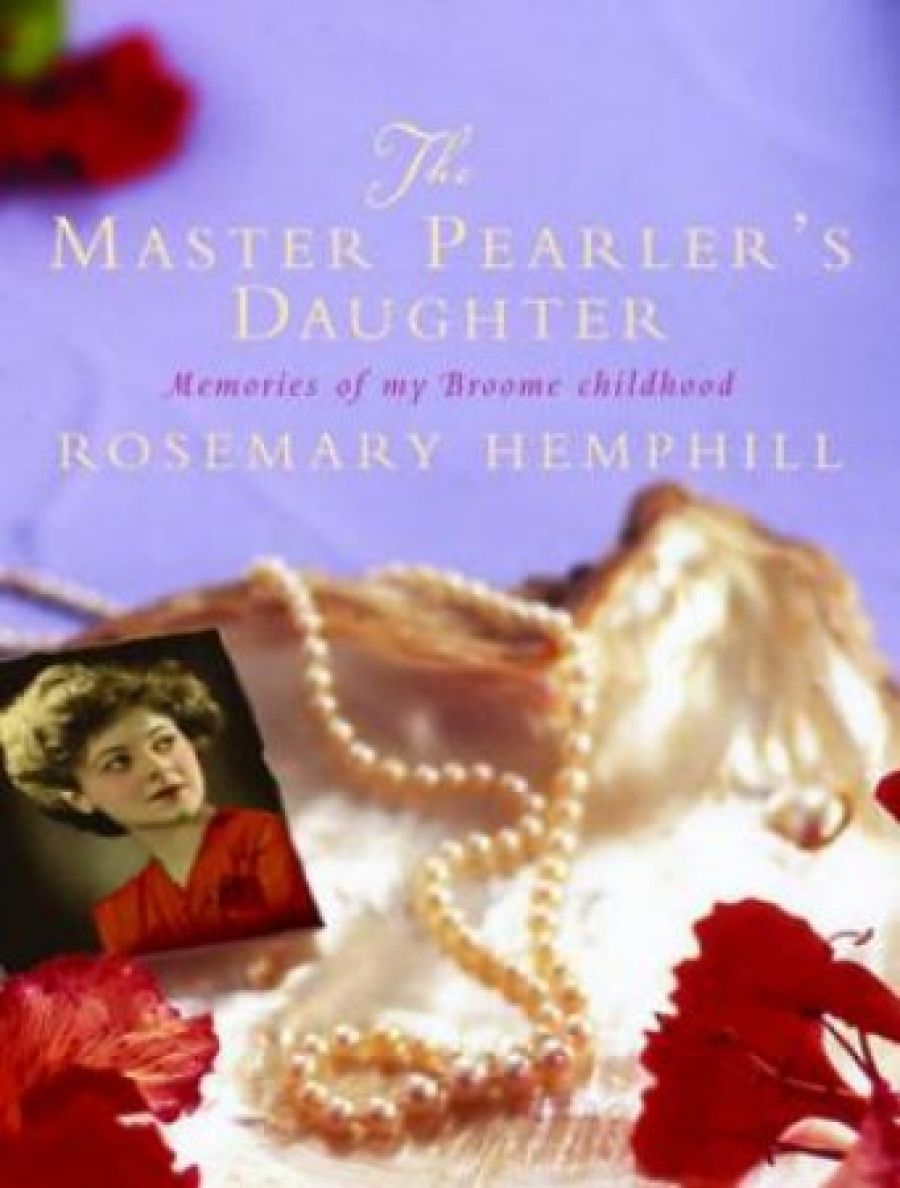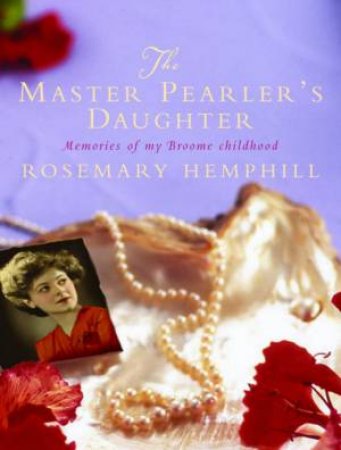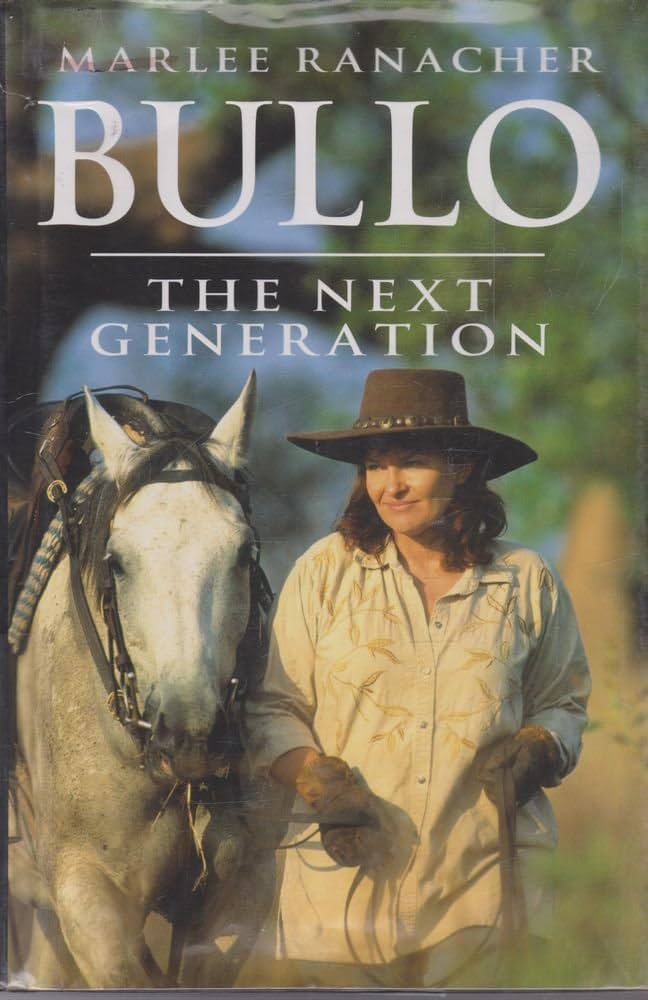
- Free Article: No
- Contents Category: Memoir
- Custom Article Title: Outback Charms
- Review Article: Yes
- Article Title: Outback Charms
- Online Only: No
- Custom Highlight Text:
Here are two engaging books that trade on the romance and exoticism of northern Australia. Neither makes much demand on the reader nor offers profound insights, but both in their different ways abound in atmosphere and a genuine ‘feel for place’.
Rosemary Hemphill’s childhood was one of extreme contrasts. Her father, the product of Jewish Orthodox parents and Sydney Grammar, washed up in Broome with the dream of becoming the master of a pearling fleet. As so many do, he fell in love with the place and stayed until forced out by the fall of the pearling industry. He served in World War I and, while recuperating from wounds in England, fell in love with the beautiful and cultured daughter of a conventional upper-middle-class couple. The English in-laws insisted that he convert in order to marry their daughter. Back in Sydney, his father declared ‘my son is dead’, as is the custom of Orthodox Jews whose progeny ‘marry out’, and forced the rest of the family to cut ties as well. Louis Goldstein, now Louis Goldie, returned to Broome with his wife and pursued the half-glamorous, half-arduous life of the ‘master pearler’. The life was harder on the women, who were forced to battle the extreme physical conditions, isolation and monotony.
- Book 1 Title: The Master Pearler's Daughter
- Book 1 Subtitle: Memories of my Broome childhood
- Book 1 Biblio: Macmillan, $30 hb, 270 pp
- Book 1 Cover Small (400 x 600):

- Book 1 Cover (800 x 1200):

- Book 2 Title: Bullo
- Book 2 Subtitle: The next generation
- Book 2 Biblio: Random House, $29.95 pb, 295 pp
- Book 2 Cover Small (400 x 600):

- Book 2 Cover (800 x 1200):

Louis comes over as irritable, irascible, authoritarian and charming, a man scarred both by his wartime experience and traumatic break with his Orthodox upbringing. His wife, Doris, was no doormat – clearly life with him in Broome required much inner fortitude – and the marriage was not a happy one. In other hands, this volatile mix of parental personalities and backgrounds could have made the stuff of searing writing. But Hemphill is content to hint at the conflicts and to stay amiably on the surface.
When Rosemary is seven, she embarks with her mother and sister to England, leaving Louis alone with his pearling fleet. They stayed for five years. The contrast between the two worlds is so marked as to be surreal: soft English greens and impeccable gardens versus the flame reds and aqua blues of dusty Broome; an elegant Georgian mansion versus the tin storm-shutters and fly-screened ‘sleeping room’ of home in Australia. Eventually, Rosemary returns to Broome (at least during holidays from her boarding school in Perth), confused in identity and longing, as a teenager, to leave the end-of-the-earth hole her father obstinately calls home.
The Master Pearler’s Daughter is a book of some charm and atmosphere. Hemphill’s eye for the physical world is sharp and detailed. While the prose rarely rises above the conventional (and occasionally descends to Enid Blytonish enthusiasms), the Broome of Japanese cooks and the Aboriginal encampment next door, and of drinks in the evenings on the verandah – the wives always prettily dressed, the men immaculate in tropical whites – is well evoked.
Marlee Ranacher’s Bullo is part autobiography, part counter-blow in the feud with her mother, Sara Henderson. Ranacher recounts what to Henderson fans must be a familiar story, but it’s a good one. A larger-than-life, big-ideas American adventurer marries Sara, a Sydney girl, and, after giving her a life of ease and luxury in Manila, suddenly lands her on a huge remote cattle station where the ‘homestead’ is a tin shed. Getting established is a huge struggle, although Marlee and her sisters are soon having a whale of a time, forgetting their personal Philippine servants for the joys of rough and tumble outback life. When the father dies, Sara, Marlee and the other daughters gamely decide to keep Bullo going, despite huge debts. How they did it is now the stuff of legend.
Ranacher tells the story from her own perspective, in a refreshingly no-nonsense style and unpretentious prose. A pretty, slight-looking girl, she is amazingly tough and hard-working, devoted to cattle work and outback life. She has her own share of misfortune, losing her first husband in a motorbike accident and surviving serious run-ins with illness. But for all its hardships, Bullo is her life and she wants no other. Her early relationship with her mother is sound, and Ranacher is careful to show the affectionate respect due to Sara Henderson, the icon. Nonetheless she does quite a lot of ‘humanising’ of Henderson to prepare us for the shock of the fallout between them. Henderson, in Ranacher’s account, becomes increasingly isolated, spoilt by fame and paranoid to a degree. She wants to sell Bullo, ignoring the unwritten understanding between them that the station would become Ranacher’s to run. Some pretty nasty family feuding erupts, from which, naturally enough given the book’s perspective, Henderson does not come out well. In the end, Bullo’s future becomes a matter for the courts. The book finishes with Ranacher in the saddle, having taken on a huge financial risk.
It is tempting to ask for more from both these books. Outback and remote Australia is not only picturesque: it poses many conundrums about how life there is to be well and productively lived. It also throws into relief the stress on human relationships brought about by extreme lifestyles, not to mention the racial mix that adds extra texture and tension. Neither Hemphill nor Ranacher rises to meet such challenges, but then I think neither posed them for themselves. They are both straightforward memoirists who have produced lively, likeable accounts, full of the genuine ‘local colour’ that comes only from firsthand experience.


Comments powered by CComment